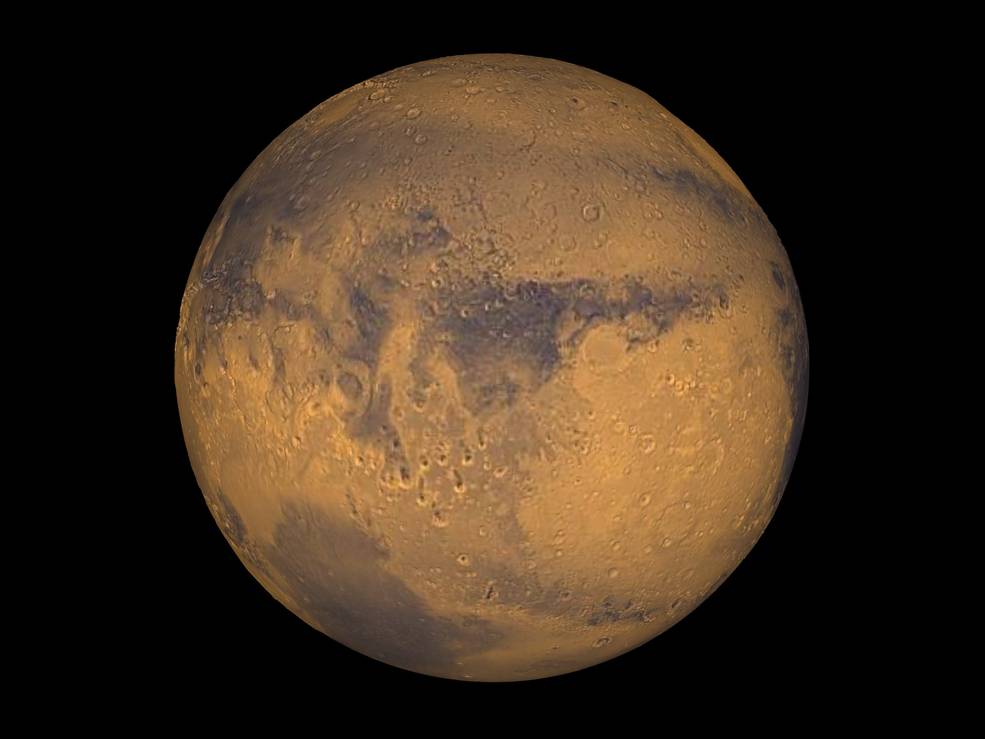 Jim Green, director of planetary science at NASA Headquarters, Michael Meyer, lead scientist for the Mars Exploration Program at NASA Headquarters, Lujendra Ojha of the Georgia Institute of Technology in Atlanta, Mary Beth Wilhelm of NASA’s Ames Research Center in Moffett Field, California and the Georgia Institute of Technology, and Alfred McEwen, principal investigator for the High Resolution Imaging Science Experiment (HiRISE) at the University of Arizona, promised a major announcement on Mars research today, and they delivered.
Jim Green, director of planetary science at NASA Headquarters, Michael Meyer, lead scientist for the Mars Exploration Program at NASA Headquarters, Lujendra Ojha of the Georgia Institute of Technology in Atlanta, Mary Beth Wilhelm of NASA’s Ames Research Center in Moffett Field, California and the Georgia Institute of Technology, and Alfred McEwen, principal investigator for the High Resolution Imaging Science Experiment (HiRISE) at the University of Arizona, promised a major announcement on Mars research today, and they delivered.Though President Obama canceling the Constellation program set back efforts to travel to Mars that had been created by President Bush, NASA is still hopeful about getting there by 2040, assuming a new president does not just cancel programs because they have an old president's name on them.
Until then, we have a cute robot - and a whole fleet of robotic spacecraft supporting it, dramatically increasing our knowledge about the Red Planet and paving the way for future human explorers. The Mars Science Laboratory Curiosity rover measured radiation on the way to Mars and is sending back radiation data from the surface. This data will help engineers plan how to protect the astronauts who will explore Mars. Future missions like the Mars 2020 rover, seeking signs of past life, also will demonstrate new technologies that could help astronauts survive on Mars.
Until then, NASA has been parsing through data to unveil a mystery, leading to speculation about what it could be. But now the wait is over and NASA has revealed the news: There is water.
Water, of course, is fundamental to life as we know it, and therefore an important part of possible life on other planets. Their analysis of seasonal dark streaks visible in spots on the planet's surface were confirmed as salt water.
That's not news, of course, water has been detected before. It's in the poles. But flowing water is another matter entirely, since other planets are cold and barren.
Yes, as we called it last week, recurring slope lineae discovered in 2011 are the result of salt water.
Now the search is on to find out where it comes from.





Comments